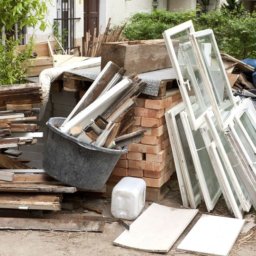Buying a Fixer Upper on a Budget
Can you really afford that fixer upper? If you’re considering flipping a house to sell, or renovating one to create your dream home there’s a few things you may want to consider first. Fixing a house can be a big challenge, there are tons of issues you may find including but not limited to; foundation issues, leaky and or broken pipes, uneven subfloor and more. These issues can take a toll on both your sanity and budget, but with proper planning, restoring a home can be incredibly rewarding.
Before you begin pouring money into your fixer upper, check out these five tips to turn a fixer upper into the home of your dreams!
Step 1. Hiring a Quality Home Inspector
Before touring a potential house, be sure to know what you’re looking for, as well as what questions you should ask your realtor. Once you’ve figured that out, find a quality home inspector. The inspector will outline all the problem areas of the home to give you a better idea of what you’re getting into. You can look up inspectors near you through the American Society of Home Inspectors (ASHI) directory. Make sure to find an inspector who can provide proof of licensing and who has at least three years of full-time experience.
Step 2. Set a Budget for Your Fixer Upper
Without a set budget, it’s very likely you’ll end up spending more than you wanted, or can afford. Remember, the cost of repairs adds up quickly so before you bite off more than you can chew, make a list of the necessary repairs. Once you’ve made that list, determine whether the time and cost of repairs is worth your while.
Your projects necessary repairs list might look something like this:
- Roofing
- Siding
- Windows
- Exterior paint
- Interior paint
- Flooring
- Cabinets
Next, you’ll need to research how much each category should cost. Some of these costs can be easily determined, but others might require guidance from a professional contractor.
Step 3. Consult Multiple Contractors
Once you’ve figured out the scope of your work, it’s time to get quotes from some trusted contractors. You might choose to hire one general contractor to oversee the whole project, or you could hire numerous subcontractors and manage them yourself. You might even choose to take on the some of your project list yourself. If you choose to hire a contractor to oversee the entire project, make sure to ask for proof of licensing, and some examples of their prior work.
Step 4. Consider What Projects to DIY
After reviewing contractor costs, you might decide to tackle some projects on your own to save money on your fixer upper. Be realistic about the jobs you consider tackling yourself, if you’re not experienced you may want to consider leaving things to the professionals.
Step 5. Create Your Project Timeline
Determine which projects need to happen first and which ones can be saved for last. Be sure to allow enough time for each project to be completed. Set realistic expectations for yourself and your contractors. Also, accept that the timeline might change as the process evolves. Consider, what are the most important things you want remodeled, and what things are not as big of a deal?
Following these five steps will ensure that your decision to renovate a fixer upper house is a commitment that you and your bank account can handle. For help with demolition and junk removal services, contact the professionals at Ultimate Demolition.


